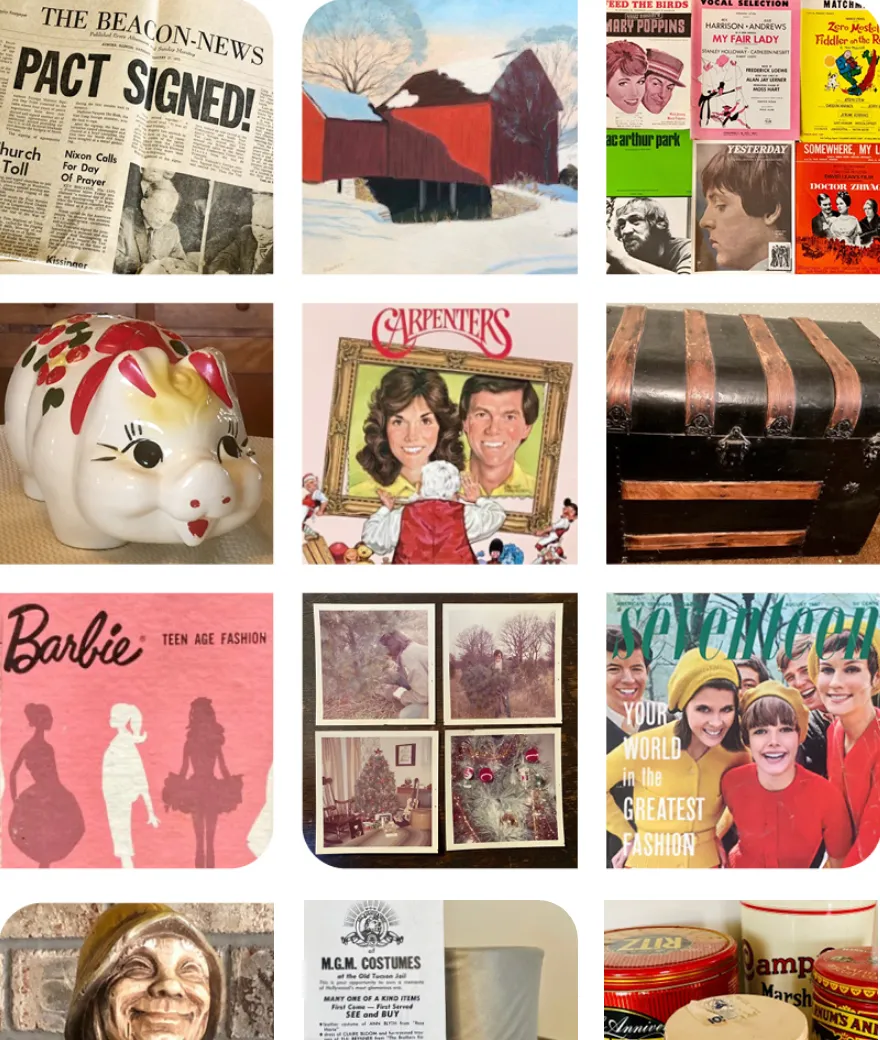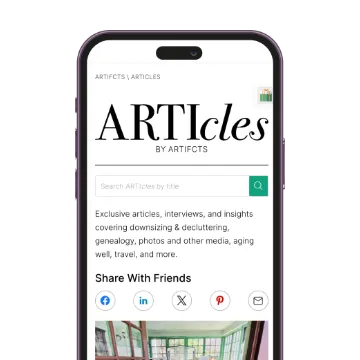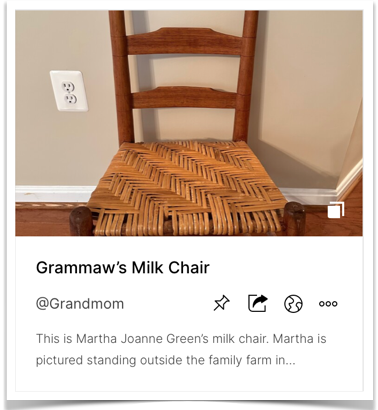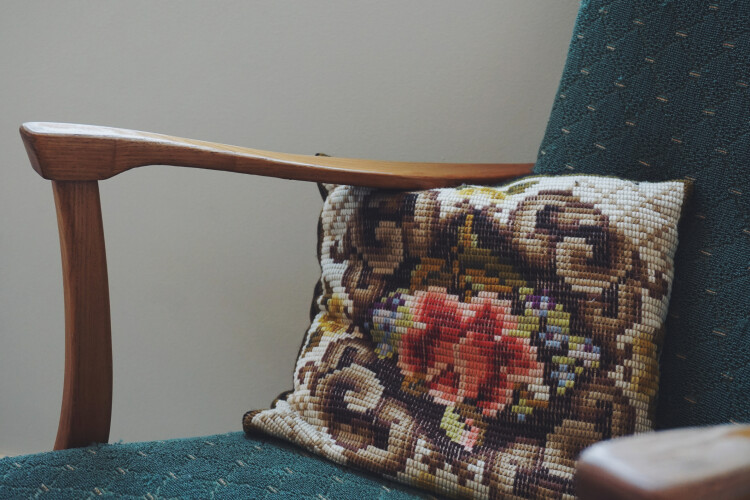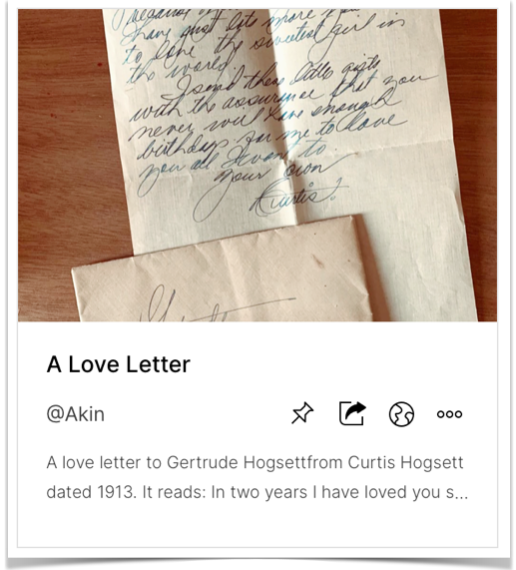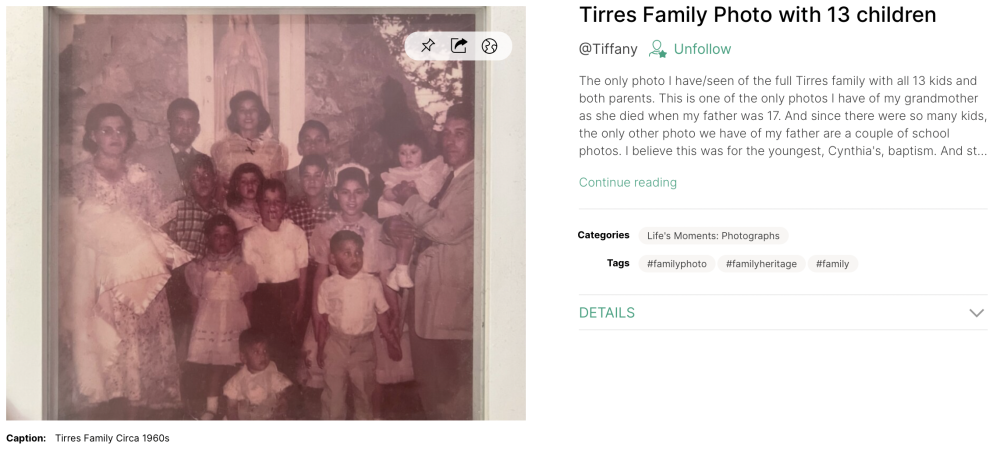Who doesn’t love the board games, flag football, and annual viewing of movie favorites like Miracle on 34th Street, The Grinch, and Home Alone over the holidays with your family?
Get ready to make some new traditions, have fun with your family, and avoid awkward conversations like, “Have you seen Aunt Dot's new hairstyle?” Instead, you'll get to enjoy more of those, “I never knew that about you!” moments! We’re putting a spin on those traditions of togetherness with Artifcts, to help you AND your family save and share the memories and laugh-out-loud stories from holidays past and present.
New Family Memories and Traditions with Artifcts
We asked some of our most avid Artifcters, “How do you Artifct with family” and distilled the rather humorous stories we heard into a step-by-step process anyone can do whether you're hosting your crew this holiday season, or traveling across country (or next door!). Bonus, not only can these steps be used during your next holiday gathering, they also work great for you next family reunion too.
#1. CREATE YOUR FREE ARTIFCTS MEMBERSHIP
If you're going to use Artifcts to preserve and share the memories and stories, you're going to need an account. Sign up free in 30 seconds, start to finish. Already have an account? Fabulous! You can skip to step #2.
#2. DECIDE ON A THEME
Give your family a focus for all those stories and memories. Here are some ideas to get you started, but we also offer free checklists to inspire you. Some families even send a link to the checklist/theme they choose ahead of the family gathering!
- Recipes. Request modern family favorites to expand your repertoire. Or stick to oldies but goodies that have been passed down through the years. Make sure you include those "secret" ingredients too.
- Photos. “Oldest” and “funniest” competitions could be fun. One person told us last year they used, “Rarely do you see so many of us together,” types of photos and it was a blast. So many long-forgotten photos, and so many family members. Go for it!
- Family treasures. Maybe they’re family heirlooms or sentimental pieces created by your kids. Maybe they're mementos purchased while traveling and make for a good story. One family told their loved ones to each bring a cherished item to be Artifcted after Thanksgiving dinner. The result? A virtual timecapsule to be enjoyed for years to come!
- Going, going, gone. This one made us laugh and came from a reader after our recent “Epilogue: Family Keepers” story. The idea here is that if you are holding on to family heirlooms, antiques, or similar items, and you don’t really WANT to hold on to them, Artifct them to let others know so they have a final chance to call “Dibs!”
- All things sports. This final example was from a family of running enthusiasts. Maybe your family is made up of musicians, artists, or travelers; same idea applies. This family Artifcted photos, running bibs, and race medals from the year, including videos of each of them crossing the finish lines. Personal best in a 5k? Awesome!
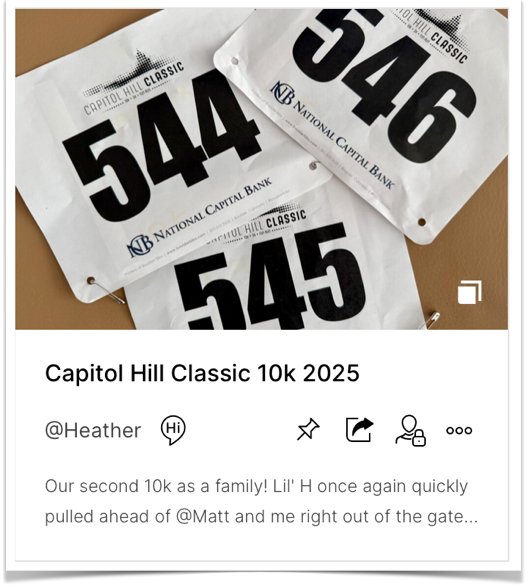 Keep the memories, but maybe not every last running bib from the past year.
Keep the memories, but maybe not every last running bib from the past year. #3 ADD FAMILY MEMBERS TO YOUR ARTIFCTS "NETWORK"
(This step is optional, feel free to skip to step #4)
You need only each person's name and email. You can make it easier by filling in this template and then returning to your Account Settings > Content & Network > Network and clicking “Import” to add them all at once.
Don't have their email addresses? Text, call, or post a message wherever you and your family communicate to ask them to create an account on Artifcts.com and then send you their screen name. You can easily add them that way too.
#4 CREATE AN INVITE-ONLY ARTIFCTS CIRCLE
Create an Artifcts Circle (we have a help video, too!) to easily unite and organize all the Artifcts your family creates and shares. Add each family member to it by: (a) selecting from your list if you completed step #3, (b) typing in their email address directly, or (c) emailing or texting them a link from your circle - they will have a week to accept the invite and you can always send a new link if needed.
-
-
- You can choose, per person, to let them invite others or to make another person an “admin” who can add AND delete others.
- In the “About” section, describe for your family what this circle is for, e.g., “Let’s gather up and share favorite recipes for the holidays.”
- Then click to invite them and leave a comment, e.g.:
-
“Please create a free Artifcts account so we can swap recipes this year and not lose them in email or texts! Tag them #Thanksgiving2025. Bonus points if you add a funny short video snippet or audio file! Don’t forget to click share and choose this Circle or we can't see it. Call me if you need help.”
You can always edit the Circle details, image for the Circle, and members, so don’t worry if you forget something (or someone) or have a change of plans.
 Our Co-Founder Heather's Artifcts Circle from Thanksgiving 2022.
Our Co-Founder Heather's Artifcts Circle from Thanksgiving 2022. #5. CREATE YOUR ARTIFCTS & PICK YOUR MOMENT
When will you set aside time to share and reminisce about all your new Artifcts from your family? Maybe as the dinner is cooking or perhaps after dessert, you each take a couple of minutes and share the Artifcts you created and added to the Circle. You may discover new details, photos, and related stories you’ve never heard before!
Best yet, once your family starts Artifcting and sharing with your new Circle, they can contribute all year long! Next year you can pick right back up or choose a new theme to capture your family's history.
Togetherness and Remembrance this Holiday Season
We want to acknowledge and talk about another facet of the holidays: grief.
We know that the holidays can be an incredibly challenging time for many of us. We’re facing them with loved ones missing for the first time or perhaps facing the end soon. Artifcts can be a powerful way to spend time together capturing memories and stories for now and later, for you and for all your loved ones. It can also make it easier to decide what becomes of all the keepsakes that we ultimately leave behind one day.
Our free Life Preparedness and After-Loss Support Guide may offer a helpful starting point. You may also find inspiration in some of our past ARTIcles by Artifcts such as Gift Your Loved Ones a Why and The Three Things I Wish My Mother Had Artifcted.
Consider taking the time to watch the recording from our panel discussion about new traditions for the holidays as we process our grief. Our guests, Rachel Donnelly, founder of My AfterLight and Professionals of After Loss Services, and Garrick Colwell, of Kitchen Table Conversations, brought diverse and deep backgrounds to the practical and emotional aspects of grief.
###
© 2025 Artifcts, Inc. All Rights Reserved.
